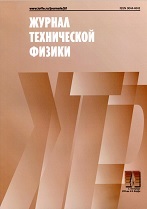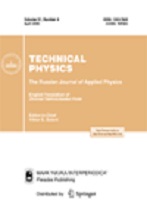|
Electrophysics
Application of the Donkin formula in the theory of reflecting and turning devices
U. K. Golikova, A. S. Berdnikovb, A. S. Antonovbc, N. K. Krasnovaa, K. V. Solov'evab
a Peter the Great St. Petersburg Polytechnic University
b Institute for Analytical Instrumentation, Russian Academy of Sciences, St. Petersburg
c Ioffe Institute, St. Petersburg
Abstract:
Electrostatic turning devices are electron- and ion-optical elements changing the direction of movement of a parallel monochromatic beam of charged particles by a given angle without affecting a beam’s parallelism. The trajectory similarity principle for electric fields homogeneous in Euler terms ensures the fulfillment of this property for the fields with a homogeneity of a zero power. The Donkin formula for 3D homogeneous harmonic functions produces extremely wide class of analytic expressions describing homogeneous electric potentials of a zero power. This paper considers the algorithm of synthesis of electrostatic turning devices that transform input parallel monochromatic beams into output parallel monochromatic beams. The algorithm is based on the Donkin formula and ensures beam stability for small deviations from the electric field’s symmetry plane.
Received: 20.05.2018
Revised: 27.05.2018
Accepted: 28.05.2018
Citation:
U. K. Golikov, A. S. Berdnikov, A. S. Antonov, N. K. Krasnova, K. V. Solov'ev, “Application of the Donkin formula in the theory of reflecting and turning devices”, Zhurnal Tekhnicheskoi Fiziki, 89:12 (2019), 1947–1964; Tech. Phys., 64:12 (2019), 1850–1865
Linking options:
https://www.mathnet.ru/eng/jtf5444 https://www.mathnet.ru/eng/jtf/v89/i12/p1947
|


| Statistics & downloads: |
| Abstract page: | 43 | | Full-text PDF : | 18 |
|





 Contact us:
Contact us: Terms of Use
Terms of Use
 Registration to the website
Registration to the website Logotypes
Logotypes








 Citation in format
Citation in format 